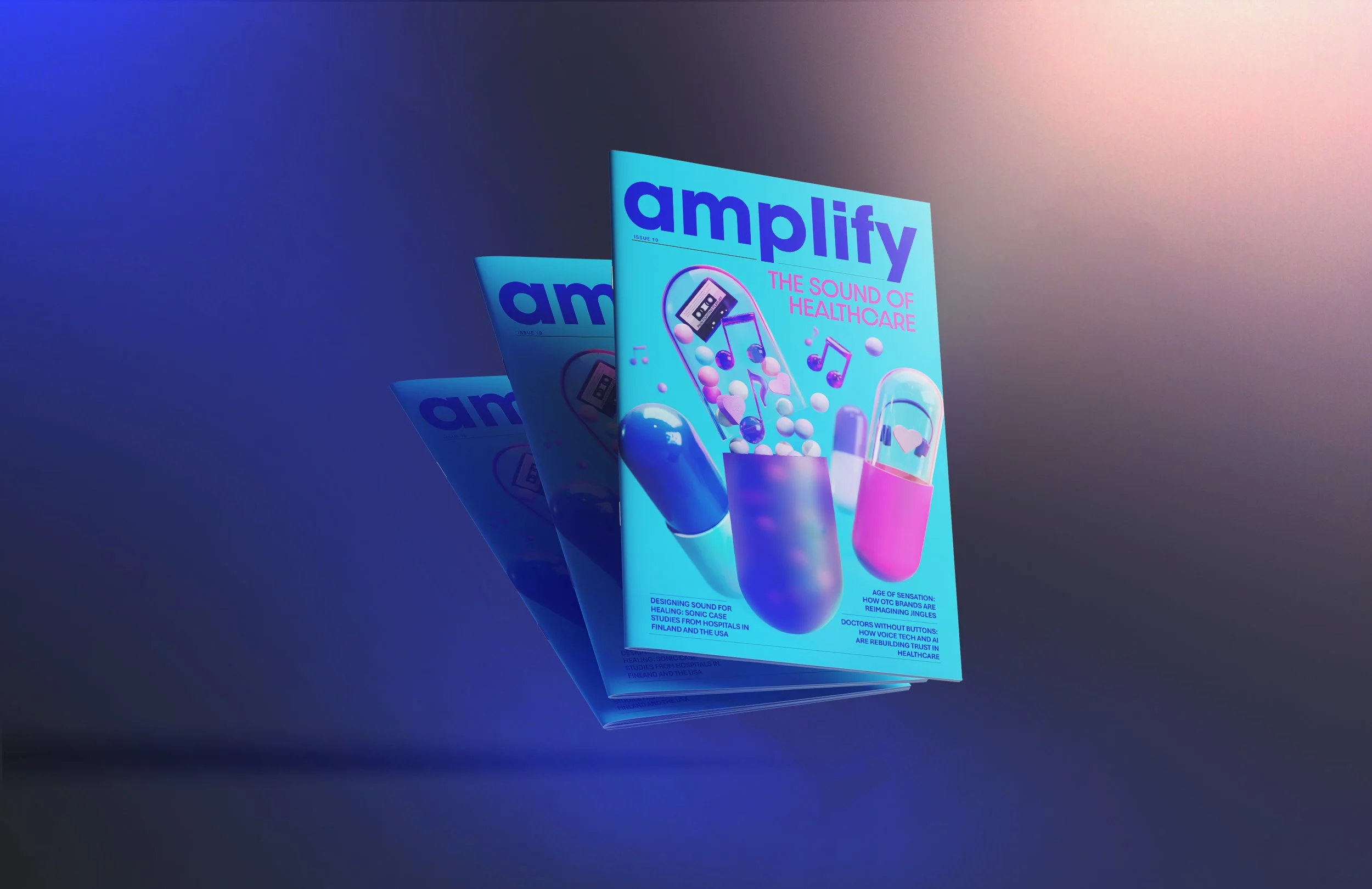Why the Majority of Pharma Brands Aren’t Using Sound Effectively
Imagine entering a hospital lobby to the sound of beach sand crunching and distant seagulls. In the elevator is the sound of the wind and flutes. Each floor has varying sound themes. This is reality for Helsinki New Children’s Hospital in Finland, which created its own distinctively calming soundscape for patients, families and staff.
Landor’s sound brand agency amp broke down real sonic branding case studies and other audio research in its 10th edition of amplify magazine, titled The Sound of Healthcare, to educate pharma marketers on the importance of sonic branding.
The magazine laid out key stats about the benefits of having a distinct sound and covered topics such as AI and voice tech, OTC brands, pain management and more.
According to the magazine, only seven out of 20 pharma companies the agency reviewed use a sonic logo and 69% of music in pharma ads is stock.
“Music and sound can have an impact on patients’ welfare, not to mention the opportunity for brands to enhance their communication with deliberate use of sound and music,” said Bjorn Thorleifsson, Amp director and department head of research and insights.
Research for the magazine used a combination of AI tools and manual social listening. The team used Amp’s SonicHub tech platform to analyze moods in brand communications while also manually reviewing social media platforms and TV commercials to identify trends in sonic branding.
The research highlighted that most healthcare brands use sound without a strategy and often leave decisions to video editors with access to sound libraries, rather than using sounds that align with brand identity.
The research also found that hospitals and telehealth companies have opportunities to use sound more thoughtfully in ways that can ease patient anxiety and boost moods. The magazine included examples such as the aforementioned Children’s Hospital in Helsinki, which used sound artists to create comforting environments for patients and staff.
“This is an opportunity for brand-building, especially in the healthcare sector, where you can have calming music that is branded, so patients can feel better about being on a hotline,” Thorleifsson said.
Emerging AI technology, such as generative AI and personalized voices, can be used as opportunities for brands to develop unique, brand-owned sonic identities that can improve patient experiences and foster brand trust.
Thorleifsson explained that there are a few steps pharma marketers can take to begin building sonic brand recognition. Brands can begin by analyzing their past use of music and sound in advertisements and assess whether these choices were intentional.
“The first step is to think about what kind of music am I using? Why am I using this music? Is it reflecting my brand, personality?” Thorleifsson said.
Brands can also identify their main goals for sonic branding and conduct market research to understand what resonates with its audience before developing a holistic approach that moves beyond jingles.
Thorleifsson recommends that brands leverage technological advancements to create a well-rounded set of sonic assets.


